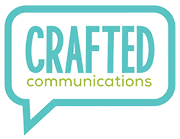In today’s data-driven world information is plentiful, and harnessing its power is an effective tool for impactful storytelling. By utilizing first party data – that is, data the company collects directly from their audiences – as a narrative tool, businesses can create effective and engaging stories that resonate with their target audience. Leveraging data and insights is not a tactic reserved for tech brands – every brand, regardless of sector, can utilize data. Gathering the right data to story tell, however, can be tricky. Below are three tips for successful data-driven storytelling:
- Connect the Dots
Before gathering insights, start by identifying the key message(s) you want to convey so that you can identify what data you need to support the story you want to tell. A good place to start is by outlining a problem you are trying to solve or a trend you want to highlight. With this framework in mind, you can determine the narrative you want to tell and how your client or brand fits into the conversation. A couple of questions to ask yourself when determining your angle include:
- Is this something your client is an expert or thought leader on? Is it appropriate for them to comment on or can they insert their brand into his topic easily?
- If you are leveraging data to demonstrate a problem, does your client’s service (be that a product, or their commentary) provide a solution?
- Are you providing an original or interesting POV?
- Creativity & Relevance are Paramount
To develop an impactful data-driven narrative, focus on creativity, relevance, and emotional connection. When determining the angle of storyline that you’re hoping to articulate with data, it’s essential that your insights are relevant to your target demographic and that you’re leveraging a creative hook to make the story fresh and interesting to media.

- Good Surveys Garner Good Results
Once you’ve determined the topic of your survey and the story you’d like to tell, perhaps the most important part of the process is developing a good questionnaire to ensure you get the insights you need to tell your story. Keep the following in mind when developing your survey:
- The questions are king: Questions should be succinct, easy to understand and useful. A tip for developing smart questions is to outline the story you want to tell and then research what data is already available that’s related to your topic to determine where the gaps and opportunities are for new and interesting insights. This will help ensure you are asking compelling questions that frame or support your key take-aways.
- Keep it brief: Avoid respondent fatigue by limiting your questionnaire to 10 or less questions, if possible. If you’re having trouble cutting questions, take a step back and think through how you would use the data from the questions asked. It’s very easy to ask questions that aren’t actually useful or that interesting.
- Improve your odds: There’s nothing more disappointing than reading through the results to find that the data is weak. To increase your chances of generating stronger data yields, consider the following tactics:
- Instead of Yes/No or True/False responses, utilize a 5-point scale like “strongly agree, agree, neither agree/or disagree, disagree, strongly disagree.” Most often, things aren’t black and white, so the 5-point scale provides respondents with more options. Additionally, you can couple the “strongly agree/agree” or “strongly disagree/disagree” responses together to garner stronger/higher percentages!
- Limit the response options you provide. If you give respondents 20 options to choose from, you are more likely to get very lower (and less mediable) percentages. Instead, condense the choices and be sure to include a “none of the above” response to keep results focused. Alternatively, if you need to include a longer list, allow respondents to “select all that apply” or “select three” to bulk up your data.
Data storytelling is as a powerful tool to cut through the noise and convey meaningful insights. By leveraging the persuasive power of narratives combined with the analytical strength of data, businesses can captivate their audience, expand brand awareness, and generate impactful buzz.
Happy data gathering!

